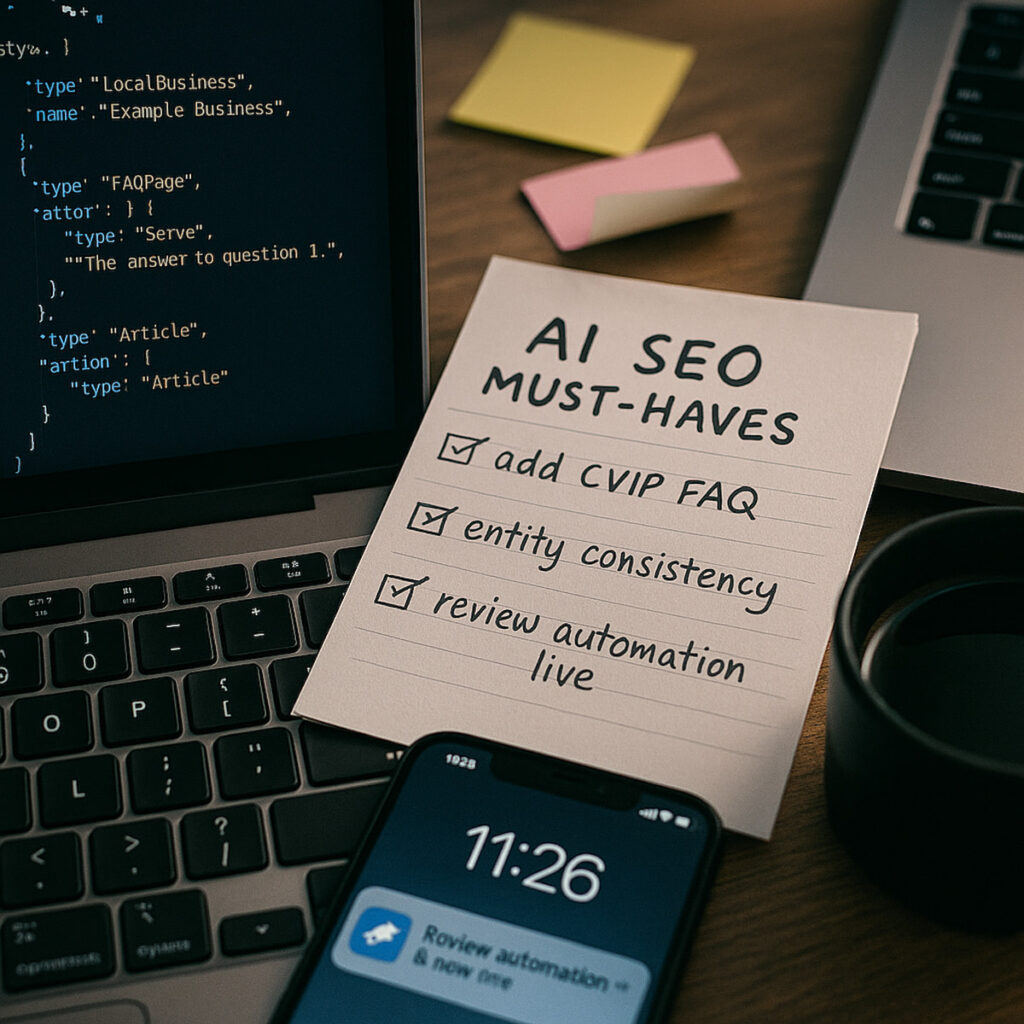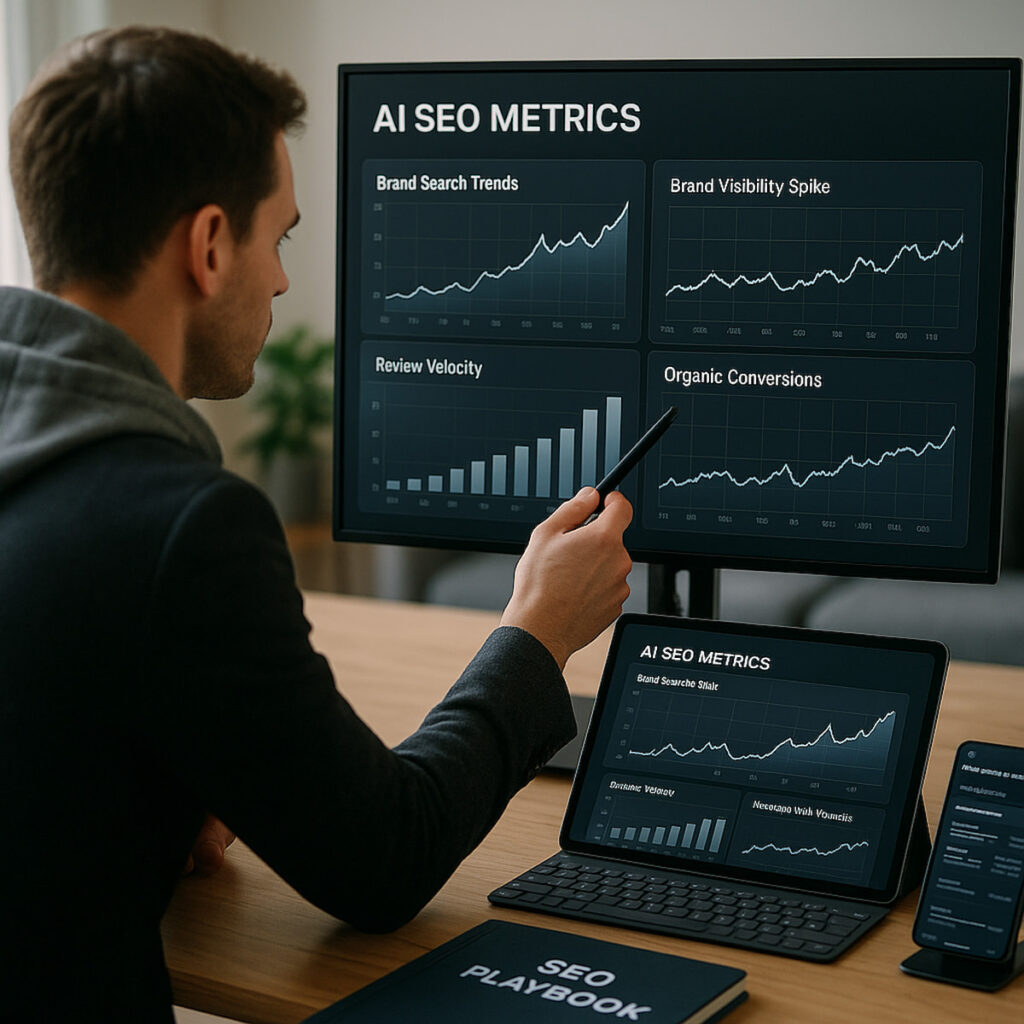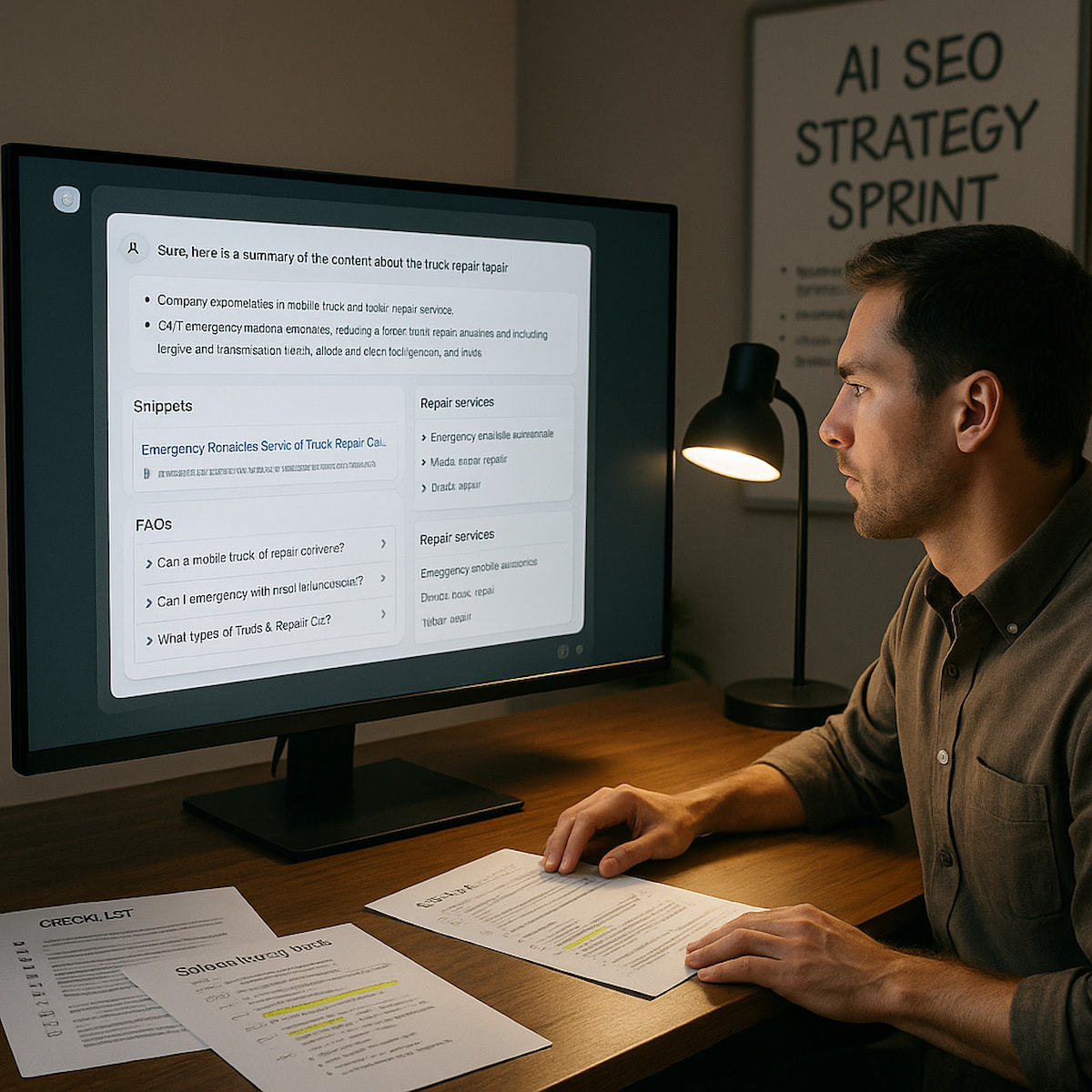What Is AI SEO—and Why It Matters Now
AI SEO is the practice of optimizing your website so it’s trusted, summarized, and referenced by AI systems—like ChatGPT, Gemini, and Bing Copilot—as well as the AI overviews now embedded in traditional search engines.
Instead of returning just “10 blue links,” assistants synthesize answers. If your brand isn’t part of that synthesis, you’re invisible where millions of users are searching.
Bottom line: AI assistants reward brands that are easy to understand, credible, structured, and helpful. That’s exactly what we build at Edward Langer Marketing & Strategy.
How AI Assistants Decide What to Reference
AI systems look for:
- Clear topical authority: Consistent, high-quality coverage of a subject.
- E-E-A-T signals: Experience, Expertise, Authoritativeness, Trustworthiness.
- Structured data: Schema.org markup and clean content formatting that make facts extractable.
- Consistency across the web: Business info, reviews, citations, and press that align with your site.
- Freshness and usefulness: Up-to-date, actionable pages beat thin, generic ones.
AI SEO vs. Traditional SEO
| Area | Traditional SEO | AI SEO |
|---|---|---|
| Goal | Rank pages on SERPs | Be cited in AI answers & overviews |
| Content | Keywords + intent | Entities, facts, FAQs, explainers, step-by-steps |
| Signals | Links, on-page, speed | E-E-A-T, structured data, knowledge consistency |
| Format | Articles & landing pages | Articles + Q&A blocks, summaries, data tables |
| Measurement | Rankings & clicks | Mentions in AI outputs, brand search lift, assisted conversions |
👉 You still need traditional SEO. AI SEO layers on structure, clarity, and credibility so machines can confidently reuse your information.
The Core Pillars of AI SEO
- E-E-A-T Everywhere: Real author bios, credentials, case studies, and specific outcomes.
- Answer-First Formatting: Use headings, TL;DR summaries, and FAQ blocks.
- Schema Markup: Organization, LocalBusiness, Product/Service, FAQPage, HowTo, Review, and Article.
- Entity Consistency: Align brand, services, and attributes across your website, business profiles, and citations.
- UX & Speed: Fast, mobile-first pages reduce abandonment and improve crawlability.
- First-Party Proof: Original photos, checklists, procedures, or data tables—signals of real-world expertise.
Essential On-Page Tactics (Start Here)
- Put the answer up top. Open each page with a 2–4 sentence summary that an AI model can safely quote.
- Build Q&A sections. Add 5–10 FAQs per service page; apply FAQ schema.
- Use descriptive headings. Each H2/H3 should answer one intent.
- Add proof points. Case studies, turnaround times, certifications, before/after images.
- Link to sources. Cite standards, regulations, or authoritative references.
- Use internal linking. Connect related service pages, locations, and blog articles to strengthen topical authority.
Technical Enhancements for AI Visibility

Organization Schema (basic)
<script type="application/ld+json">
{
"@context":"https://schema.org",
"@type":"Organization",
"name":"Edward Langer Marketing & Strategy",
"url":"https://edwardlanger.com",
"logo":"https://edwardlanger.com/logo.png",
"sameAs":[
"https://www.facebook.com/yourbrand",
"https://www.linkedin.com/company/yourbrand"
]
}
</script>
LocalBusiness Schema (adapt type to your industry)
<script type="application/ld+json">
{
"@context":"https://schema.org",
"@type":"LocalBusiness",
"name":"Your Business Name",
"url":"https://yourdomain.com",
"telephone":"+1-555-555-5555",
"address":{
"@type":"PostalAddress",
"streetAddress":"123 Main St",
"addressLocality":"Your City",
"addressRegion":"ST",
"postalCode":"00000",
"addressCountry":"US"
},
"openingHours":"Mo-Fr 09:00-17:00",
"areaServed":"Your Region"
}
</script>
FAQPage Schema (for a service page)
<script type="application/ld+json">
{
"@context":"https://schema.org",
"@type":"FAQPage",
"mainEntity":[
{
"@type":"Question",
"name":"How does AI SEO differ from traditional SEO?",
"acceptedAnswer":{"@type":"Answer","text":"AI SEO optimizes your content to be cited in AI-generated answers by focusing on structured data, entity clarity, and E-E-A-T signals."}
},
{
"@type":"Question",
"name":"Do I need schema markup on every page?",
"acceptedAnswer":{"@type":"Answer","text":"Start with Organization, LocalBusiness, Article, and FAQPage schema for your highest-impact pages, then expand gradually."}
}
]
}
</script>
Entity-First Content: Own Your Topics
AI models map entities (brands, services, locations) and their relationships. To strengthen your visibility:
- Create topic hubs. For example, a consulting firm might have a hub on “Marketing Strategy” linking to subtopics like content, automation, and analytics.
- Use consistent naming. Don’t scatter synonyms; keep service terms uniform.
- Publish how-tos and definitions. These feed AI summaries.
- Provide downloadable checklists and spec sheets. High-trust artifacts AI assistants like to cite.
Local & Review Signals (Critical for Service Businesses)
- Google Business Profile: Complete categories, services, photos, and posts.
- Reviews: Automate requests, reply professionally, and highlight success stories.
- Citations: Keep NAP (Name, Address, Phone) consistent across directories.
- Location Pages: Create unique pages per service area with FAQs and local proof (photos, testimonials, case studies).
👉 AI assistants often prefer businesses with dense, consistent local signals and clear evidence of satisfied customers.
Measure What Matters
Since AI assistants don’t always pass referral data, look for correlated signals:
- Brand search lift: More people searching your name + service + city.
- Organic conversions: Form fills, calls, bookings from non-branded queries.
- Engagement: Time on page, scroll depth, CTA clicks.
- Share of answers: Check if your brand shows up in AI-generated overviews.
- Review velocity: More 4–5★ reviews after automation.
90-Day AI SEO Implementation Plan

Days 1–30: Foundations
- Technical audit (speed, crawlability, Core Web Vitals).
- Organization + LocalBusiness schema.
- Add answer-first summaries + FAQ blocks to top 10 pages.
- Launch review automation.
Days 31–60: Depth & Structure
- Build topic hubs + internal links.
- Add FAQ/HowTo schema.
- Publish 4–8 high-E-E-A-T articles with original media.
- Create downloadable assets for lead capture.
Days 61–90: Proof & Expansion
- A/B test titles, intros, CTAs.
- Expand location pages with galleries + case studies.
- Update facts for consistency.
- Roll insights into a quarterly content roadmap.
FAQs
Does AI SEO replace traditional SEO?
No. It extends it with structure and credibility so AI systems can confidently reuse your content.
What if we don’t have many reviews?
Start now. Automate polite requests, respond consistently, and display reviews on your site.
Do we need schema on every page?
Prioritize high-impact pages first, then roll out sitewide.
How does this help multi-location businesses?
Create a repeatable location template (address, services, hours, photos, reviews) to ensure consistency.
Work With Edward Langer Marketing & Strategy
Want your business to show up in AI answers—not just search results? We’ll build an AI-ready content and schema system, automate reviews and follow-ups, and deliver dashboards that prove impact.
Book a strategy call today to start your AI SEO plan.
